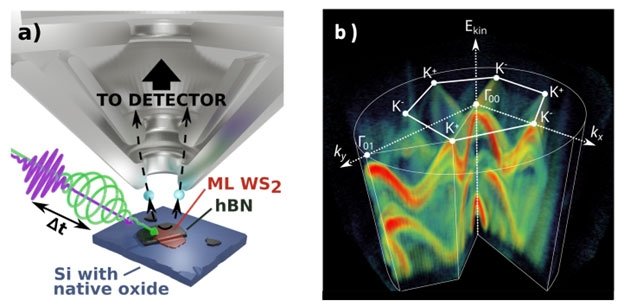University of Washington professor Xiaodong Xu studies the properties of single atomic layer semiconductors, looking for new materials and new ways to control electrical conductivity.
Tag: Excitons

Directly Imaging Quantum States in Two-Dimensional Materials
When some semiconductors absorb light, the process can create excitons, quasi-particles made of an electron bound to an electron hole. Two-dimensional crystals of tungsten disulfide have unique but short-lived exciton states. Scientists developed a new approach called time-resolved momentum microscopy to create separate images of these individual quantum states. The study found that the coupling mechanisms that lead to mixing of the states may not fully match current theories.
Microscopy Images Could Lead to New Ways to Control Excitons for Quantum Computing
Excitons are drawing attention as possible quantum bits (qubits) in tomorrow’s quantum computers and are central to optoelectronics and energy-harvesting processes. However, these charge-neutral quasiparticles, which exist in semiconductors and other materials, are notoriously difficult to confine and manipulate. Now, for the first time, Berkeley Lab researchers have created and directly observed highly localized excitons confined in simple stacks of atomically thin materials. The work confirms theoretical predictions and opens new avenues for controlling excitons with custom-built materials.
LED Material Shines Under Strain
A team led by researchers at Lawrence Berkeley National Laboratory (Berkeley Lab) and UC Berkeley has demonstrated an approach for achieving LEDs with near 100% light-emission efficiency at all brightness levels.